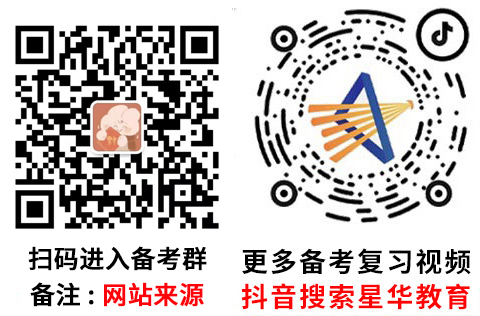英语:状语从句—高职高考网课
(一) 状语从句的概念和分类
在句中做状语的一般为副词, 所以副词性从句就是状语从句。状语从句分为时间状语从句、地点状语从句、原因状语从句、条件状语从句、目的状语从句、结果状语从句、让步状语从句、比较状语从句和方式状语从句共九种。
学习状语从句主要应注意引导状语从句的从属连词的用法与区别,以及从属连词在一定的语言环境中的意义与用法。
(二)状语从句在复合句中的位置
一般说来,状语从句在复合句中的位置比较灵活,有时置于句首,有时置于句末,有时置于句首与句末都可以。如:
While I was working in the garden, mywife was cooking dinner. 我在园子里干活时,我妻子正在做饭。
Wait until the children settle downbefore you start the lesson. 等学生都静下心来再开始上课。
当状语从句置于句首时,其后通常会用逗号隔开。但当句子较短或当状语从句与主句的关系比较密切时,也可以不用逗号。如:
If you pull too hard you will break therope.
如果太用力拉,就会把绳子拉断。
当状语从句位于句末时,其前一般不用逗号。但是,如果状语从句与其前主句的关系不是很密切,尤其作为添补内容时,其前也可用逗号,如:
Better say yes, if they ask you. 如果他们问你,你最好说“是”。
We knew he couldn’t have paid for it,because he had no money. 我们知道不可能是他付了这笔钱,因为他没钱。
另外,状语从句有时也可位于句子中间,如:
He said that if I passed my test hewould buy me a car. 他说如果我通过考试,他将给我买辆汽车。
This, if the news (should) be true, isa very serious matter. 如果消息属实,这可是一件非常严重的事情。
1.地点状语从句常用引导词有where;
特殊引导词有wherever,anywhere' everywhere。
2.原因状语从句常用引导词有because, since, as;
特殊引导词有seeing that, now that, in that, considering that, giventhat, in as much as, in so much aS。
3.目的状语从句常用引导词有so that, in order that;
特殊引导词有lest, in case, for fear that, in the hope that, for thepurpose that, to the end that。
4.结果状语从句常用引导词有so... that, such..that;
特殊引导词有such that, to the degree that. to the extent that, tosuch a degree that。
5.条件状语从句常用引导词有if,unless;
特殊引导词有as/so longas, only if'providing/provided that, suppose that, incase that, on condition that。
6.让步状语从句常用引导词有though,although,even if,even though;
特殊引导词有as(用在让步状语从句中必须要倒装).while( -般用在句首),no matter.,,,in spite of the facthat, while, whatever, whoever, wherever, whenever,however,whichever。
7.比较状语从句常用引导词有as(同级比较),than(不同程度的比较),特殊引导词有the more.the more.just as.
so.…A is to B what /as X is to Y, no... more than, notA so much as B。
8.时间状语从句when和while有时可以起并列连词的作用。
(1) when作并列连词时意为“突然”“正在这时”。
(2)while意为“……而……但是……”,连接两个意义上相互对比的成分。
例如:
Jane was dressed in brown while Mary was dressed inblue.
简穿褐色衣服,玛丽却穿蓝色衣服。
when表时间,从句既可以用延续性动词,又可以用瞬间动词。
as表时间,与when相似,但侧重强调主从句动作同点或同段进行。
when,while后可以接分词短语。
常用引导词有when;
特殊引导词有wher\ever,whil。,as, before, after, since, till, once, as soon as等。
9.方式状语从句常用引导词有as,as if,as though等。
附:比较下列引导状语从句的引导词
1. because, as, since, for
语气位置 意义
because 最强 前或后 “原因”;表客观因果关系
as较强 刖“由于”;把众人所知的事实当做理由
slnce较弱 前“既然”;就对隽.陈述的事实作为理由
for最弱 后“理由”;对某一事实进行推断的理由
注:上面所说的“前”,指从句在主句之前;“后”,指从句在主句之后。
2. so that, so... that, such...thatso that意为“以便”“结果”,表目的和结果。
注意:在从句中有情态动词表目的,无情态动词表结果。
so.that意为“如此……以至于”,表结果。该结构常见于:
①so+形/副+that②so+形+a(an)+单数名词+that③so+many/much+复数名词(不可数名词)+thatsuch.,.that“如此的……以至于”,表结果。该结构常见于:八such+a( an)+形容词十名词+that;Bb such+形容词十复数名词/不可数名词+that。
3. though,although,as though在句首表“尽管”时 though和although两者都可以用,但句后不能再用but。
下列情况只能用though:as though( =as if);eventhough(一even if)。
在句末表示“然而”,as表示“尽管”,从句的表语、状语等成分要倒装。
4. whatever, howwever, wherever, whenever它们是what,how,where,when的强势语气,分别等于:no matter what, no matter how, no matter where, nomatter when。
5.when,while.aswhen通常指一时的动作或状态,表示从句动作与主句动作同时发生,或先于主句动作;while常用来引导两个同时进行的持续时间较长的动作;as常用来引导两个动作紧接着发生,强调“同一时间”或“一先一后”。
注意:while表时间,从句需用延续性动词,不可用瞬间动词。
when表时间,从句既可以用延续性动词,又可以用瞬间动词。
as表时间,与when相似,但侧重强调与主句动作同点或同段进行。
when,while可以接分词短语。
一、时间状语从句
1、when的用法
(1)when既可引导一个持续性动作,也可引导一个短暂性动作,可用于表示主句和从句动作同时发生或从句动作先于主句动作,有时还可表示从句动作后于主句,意为“当。。。时候”。
(2)when在be about to do。。。when。。。,be doing。。。when。。。,had done。。。when。。。,be on one’s way。。。when。。。,be on the point of doing。。。when。。。等结构中,作“那时突然”讲。
(3)when “既然、鉴于;尽管,虽然(位于主句之后);如果”
2、while的用法
(1)表示“当。。。时候”,引导的动作必须是延续性的。
(2)用作并列连词,表示相对关系“然而”。
(3)引导让步状语从句,相当于although,意为“虽然”,位于主句前。
(4)引导条件状语从句,相当于as/so long as,意为“只要”。
3、as 的用法
(1)表示“当。。。时候”,强调同时发生,不指先后。
(2)说明两种正在发展或变化的情况,表示“随着”,表示时间的推移。
(3)表示“一边。。。一边。。。”。
(4)强调两个动作紧接着发生。
(5)表示“虽然,尽管”。
(6)其他含义“正如,正像”,“作为”,“由于,因为”。
4、before的用法
(1)一般意为“在。。。之前”“。。。才”,“。。。就”“还没有。。。”“免得”“不知不觉”“宁可,宁愿”,“否则,要不然”。
(2)It + will be/was + 时间段+before+一般现在时/一般过去时。在肯定句中,意为“多长时间之后才”;在否定句中,意为“用不了多长时间就”。
5、until和till
(1)与肯定句连用,必须是延续性动词。
(2)与否定句连用,必须是非延续性动词,表示“直到。。。才,在。。。之前不。。。”。
注意:not until可用于强调句和倒装句
强调句:It is/was not until…that…倒装句:not until 放句首时,主句要部分倒装。
6、since的用法
(1)since后是非延续性动词,时间起点从该动作发生算起,意为“做某事多久了”;since后是延续性动词,时间起点从该动作结束算起,意为“不做某事已有多长时间”。
(2)It is/has been +时间段+since+一般过去时
7、表示“一......就......”的句型
(1)as soon as, once,immediately,directly,instantly,the moment,the minute等引导的从句都表示从句的动作一发生,主句的动作随即发生,常译作“一。。。就。。。”,这类从句中,经常用一般现在时态代替将来时态。
(2)on doing sth.或“on one’s+名词”作时间状语。
8、有些名词和副词可以起连接词的作用,引导时间状语从句。
注意:时间状语从句中不用将来时态。若要表示将来时间,可用一般现在时态表示。但when引导名词性从句时,从句中要使用将来时。
二、地点状语从句
1、地点状语从句由where,wherever引导。
注意:where与where的区别:Where表特定的地点,而wherever表示非特定的地点。
Wherever=to/at any place where
2、地点状语从句与定语从句的区别:
Where引导定语从句时,从句前应有一个表示地点的名词作先行词;而状语从句前则无先行词。
三、原因状语从句
引导词:because, since,as, now that, not that…, but that…, seeing that, considering that, in that
注意:for也可以表示原因,属并列连词,但不是说明直接原因,而是对某种情况加以推断,用于表示补充说明理由。
四、目的状语从句
引导词:so, so that, in order that, that, to the end that(以便,为了),in case,for fear that,lest(以免,以防),
目的状语从句中通常有情态动词can,could,may,might,should,would等。
注意:1、in case 还可表示“万一,假如”。
2、目的状语从句可以用so as to, in order to 等不定式代替,但主句和从句的主语必须一致。
五、结果状语从句
引导词:so...that(如此。。。以至于。。。),such...that(如此。。。以至于。。。),so that(结果是),with the result that(所以,结果是)
注意:
(1)so...that与such...that的区别
So+形容词such+a/an+形容词+单数名词
So+形容词+a/an+单数名词such+形容词+复数名词
So+副词such+形容词+不可数名词
So many/few+复数名词
So much/little+不可数名词
(2)so that引导的目的状语从句与so that 引导的结果状语从句
目的状语从句一般使用情态动词,结果状语从句一般不使用情态动词;
结果状语从句常常用逗号与主句分开。
(3)so...that与so...as;such...that与such...as
So...that/such...that为结果状语从句;so...as/such...as为定语从句。
六、条件状语从句
引导词:if(如果),unless(除非),if only(只要,但愿),only if(只有),in case(万一),suppose/supposing(that)
(假设),provided/providing(that)(只要,假若),on condition that(要是,在。。。条件下),so/as long as(只要),(let's/let us)say(假设)
七、方式状语从句
引导词:as(像。。。一样,正如。。。),as if/as though(好像,宛如)
注意:1、固定句型A is to B what C is to D.意为“A对B而言正如C对D一样”。
2、as if, as though引导的从句若与事实相反,用虚拟语气;若与事实相符,不用虚拟语气。
八、让步状语从句
引导词:though/although/as(虽然,尽管),even if/though(即使,尽管),whether/no matter whether...or(not)
(不管。。。是否,不管是。。。还是)wh-ever/no matter wh-(无论。。。)
注意:
(1)though,although,as的区别
A、Though,although的主句中可以用yet, still, nevertheless,但不可使用but。
B、though引导的从句可以倒装,也可以不倒装;as引导的从句必须倒装;although引导的从句不能倒装。
其结构为:形容词/分词/副词/动词原形/名词(无冠词)+as/though+主语+谓语……
(2)though可用作副词,放在句末,意为“不过,但是”。Although无此用法。
(3)某些短语也引导让步的从句或短语,意为“尽管”,如:in spite of the fact that, despite the fact that, regardless of(the fact that)
九、比较状语从句
引导词:as...as(和……一样),not as/so...as(和……不一样),than(比),the more...the more...(越……越……)
十、状语从句中的省略问题
1、在状语从句中如果主语与主句的主语一致,同时从句中又含有系动词be,则通常可省去从句的主语和系动词be,留下其余部分。
2、若状语从句中主语是it, 动词是系动词be, 则通常可省去主语it及系动词be,留下其余部分。
练习

专项训练
1. Read it aloud ______ the whole class can hear you clearly.
A. so that
B. if
C. when
D. although
2. No matter _______, you must follow the school rules.
A. where are you
B. what do you do
C. who are you
D. who you are
3. The _______ you work, the more trust and praise you will get from your workmates.
A. more careful
B. more carefully
C. most carefully
D. most careful
4. Don't touch the instruments in the laboratory _______ the teacher allows you to do that.
A. unless
B. when
C. though
D. because
5. You will not know every detail about this book _______ you finish reading it carefully.
A. unless
B. if
C. when
D. after
6. _____ he was very tired, he continued working in his office.
A. Since
B. Although
C. As soon as
D. Because
7. My mother was late for the meeting _______ there was a traffic jam.
A. so
B. if
C. but
D. because
8. —I want to know if Maria _______ us in the fashion show tonight.
—I believe if she _______ her homework, she will join us.
A. joins; finishes
B. will join; finishes
C. joins; will finish
D. will join; will join
9. Nobody noticed that Amy was not on the bus ________ it had reached the final stop.
A. when
B. because
C. if
D. until
10. We can't give you the card _______ you bring all these.
A. if
B. unless
C. if not
D. If only
11. Tom _______ to bed _______ he finished his work.
A. won’t; until
B. wasn’t go; till
C. went; until
D. didn’t go; until
12. As soon as Lily _______, we _______ the journey.
A. will come, will start
B. comes, will start
C. comes, start
D. will come, start
13.---Look!Some people are running the red lights.
---We should wait ______ others are breaking the rule.
A. although
B. unless
C. until
D. if
14. Mary believes the Dragon Boat Festival will become very boring_______ she can watch the boat race. She really loves them.
A. because
B. so
C. unless
D. but
15. I don’t have lots of money for the trip, so I’m not going to fly_______ the airlines lower ticket prices.
A. once
B. if
C. unless
D. after
【参考答案】
1-5 ADBAA
6-10 BDBDB
11-15 DBACC
广东星华教育致力于提供优秀的高职高考辅导,提供线下教学,线上教学的不同方式,包括学习资源、自学套餐、辅导学习套餐、线下冲刺般的套餐,星华教育的高职高考能够为中职学生们非常好的考前培养和辅导。






 微信收款码
微信收款码 支付宝收款码
支付宝收款码